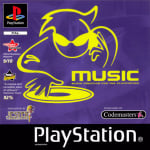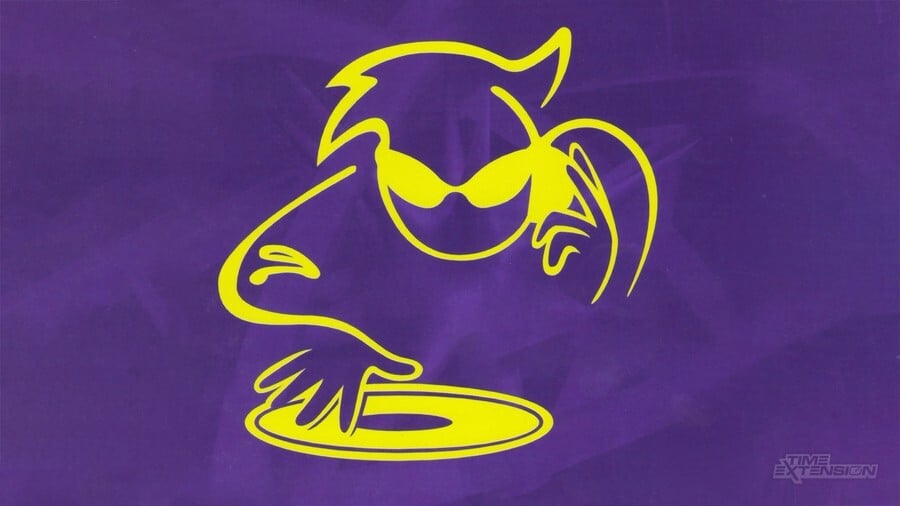
'Creative' software has a long and proud history in the world of computers and gaming. From the popular Protracker software on the Amiga to the silly fun of Mario Paint on SNES, there have always been options for players to put the controller down and express themselves digitally. However, one product stands out in this field, and that's Music (also known as Music: Music Creation for the PlayStation) for the original Sony PlayStation.
Step back to 1997, and Tim Wright – also known as CoLDSToRAGE of WipEout fame – was composing music for the upcoming PC game Tellurian Defence when his bother Lee told him a business software company he was working for in North Wales wanted to make games. "They had a cash surplus that the owner was keen to invest into something more fun, even if it would be riskier," Wright tells us. "The initial idea was to hire a guy to manage the games production side of things, but because I'd been working in the games industry for some time, I could maybe advise him on various aspects of setting up a small development studio and even use my contacts at Sony to arrange for development kits for the PS1."
This was how it panned out until the individual managing the studio bailed because he felt out of his depth. Suddenly, without a lead person in place, company boss Gavin Morgan suggested to Wright's brother that his sibling should come and work full-time. "This would mean leaving Psygnosis and taking a big risk... but back then, I was up for a challenge!" Wright says.
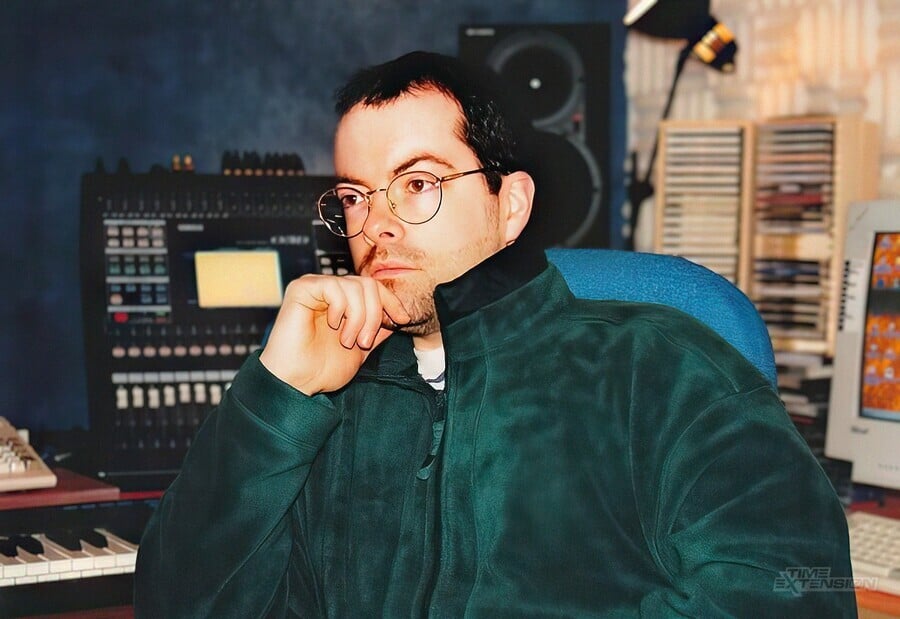
With the raw pieces of a 'game' software company now in place, all that was left outside of actually making software was a name. "Lee, myself, our other brothers and some friends had, in the past, been part of a demo group on the Commodore 64 called Jester Brothers International, and so the owner of the business software company thought it might be cool if we called the new games venture accordingly, and so, this was how Jester Interactive was born."
There was one guy in my local town who had a 4-track tape recorder, and I would, on very rare occasions, be allowed to use it. I couldn't afford one of my own
Now all of the pieces were in place, and software discussions began. The initial idea for Music came about because Wright, already a prolific soundtrack writer, remembered having to beg or borrow musical equipment as a teenager. "There was one guy in my local town who had a 4-track tape recorder, and I would, on very rare occasions, be allowed to use it. I couldn't afford one of my own, and I wondered how many teenagers felt like me, but who did own a PS1."
Thus, the idea for Music was born – but it wasn’t all smooth sailing. Despite hindsight making it appear screamingly obvious, the path to Music took a few turns. "We went through various iterations of product ideas, a kid's playground with a drum machine made from a merry-go-round and bass on the slide," recalls Wright. "Then there was talk of a kitchen setting with a stove cooking 'bass beans' and so on. Eventually, Morgan said, 'This is all a bit shit isn't it?'"
The PS1 had 24 channels of sampled audio with built-in effects and 512 Kilobytes of sound RAM. This would be perfect for creating a kind of Soundtracker-type music sequencer. The boss was reluctant to release a utility product for a games console, but after speaking to Sony themselves, a proper music package was deemed the right way to go. "Sony had decided they wanted to have PS1 as a focal point in the living room, not just in kid's bedrooms, so our proposal came at a perfect moment in time for them," confirms Wright.
I recall working almost 36 hours straight, fuelled by coffee and Red Bull. Eventually, one side of my head went numb, and I fell asleep on the carpeted studio floor
Coincidentally, Sony itself had flirted with music creation software in 1996 with Fluid (known as Depth in Japan). Released in Europe in 1998, it was a chilled, melodic and enjoyable dolphin’s journey through 12 soundscapes, each with its own musical style. Whilst themed around the more ambient electronic genres such as dance and drum and bass, Fluid allowed for music creation on a somewhat limited scale. Players could construct tunes using eight sound channels and hundreds of pre-made samples. Sadly, it was more a matter of choosing and turning each sound on and off in real-time rather than a fully structured tune, but it was interesting nonetheless – and showed the potential of the idea, if nothing else.
Work began in earnest on Music, but under strict constraints. The team was small, with one artist, a couple of programmers and Wright doing the design, samples, music and riffs. The main challenge was the release date, set for around nine months after work began. Wright remembers this as his worst crunch in game development. "This was a really tough production schedule and coincided with the birth of my son. At one point, I recall working almost 36 hours straight, fuelled by coffee and Red Bull. Eventually, one side of my head went numb, and I fell asleep on the carpeted studio floor. My brother found me in the morning and made me a coffee, so I could keep going and hit the deadline... the deepest crunch development I've ever done, and [I] never want to repeat!"
Once a working demo was available, the team set about sending it to magazines and publishers. At this point, it was a hard sell as no one really understood the product, as it was so unique compared to the usual game releases; it was also challenging to settle on the target audience. Then a bizarre twist of fate would follow; British giant Codemasters contacted Jester to see what they had been working on. "Patrick O'Luanaigh [now CEO of nDreams] saw what we'd already created he was amazed," remembers Wright. "They had, in fact, been working on a music composition package back at Codemasters, but seeing how far into development we were, it made total sense to just publish our product instead." Codemasters duly canned their own product and put their marketing muscle behind Jester and Music, giving the project the kind of mass-market penetration that many small-to-medium-sized developers could only dream of at the time.
The video tool allowed you to generate some really interesting visual accompaniments to your tunes, or even used stand-alone in clubs by VJays
Released in late 1998, Music was a 16-channel professionally-orientated music creation tool with tons of built-in samples that could be arranged at the user's will. It gave complete creative freedom to make tunes in multiple time signatures in multiple genres across those 16 channels. For those with no musical experience at all, the team put together hundreds of premade sounds called 'riffs'. These were small or longer melodies, basslines, drum loops or even vocals. These could be arranged so even someone with a passing interest in making something cool could get involved. Factor in a fun but limited music video creator, and you had an excellent package for those looking to get into making music; granted, it was a relatively unsophisticated tool in many ways, but it was a fantastic gateway into the world of audio creation – and, perhaps most important of all, it sold well enough to spawn a series.
The first sequel was released a year later under the name Music 2000 in Europe and MTV Music Generator in North America. This was a large step forward in terms of quality and design. Whilst the PlayStation had 24 sound channels, the original game only used 16 of those, with eight reserved for echo effects. Music 2000 gave the user access to all 24 channels, thus opening up the hardware fully. "We kept the original samples from Music but added a whole load more, including lots more vocals," explains Wright. The video tools were also improved – something that got very little press, considering it was a really cool bit of programming. "The video tool allowed you to generate some really interesting visual accompaniments to your tunes, or even used stand-alone in clubs by VJays," says Wright.
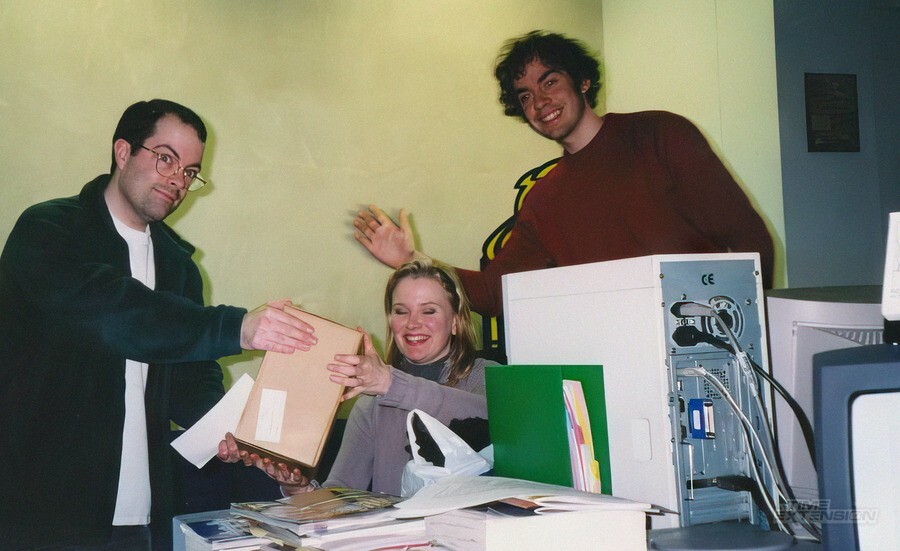
Music 2000 hit shops in the UK in 1999 and was a significant improvement over its predecessor. The higher resolution interface allowed for more channels to be viewed on-screen at once and, perhaps most importantly, combine multiple channels into each 'riff'. This made for a smoother, faster and more expansive creation tool that pushed Sony's 32-bit console to its audio limits. Sample manipulation was fantastic, with full envelope controls, an 8-stage reverb option and phasing-type sounds that could be applied to each note. The depth of the software was truly spectacular, given the advanced age of the host console; with Music 2000, it was possible to make some genuinely great pieces of music.
Screens are wider than they are tall, so you can see more channels across the screen, and pianos are horizontal, not vertical
As a new generation of PlayStation dawned, there was another opportunity for Jester to provide an even higher quality tool. MTV Music Generator 2 – as it was now known globally – hit the PlayStation 2 in 2001, and it brought an unexpected shift in direction – quite literally, in fact. This change was in the physical direction of the flow of music, from top to bottom rather than left to right. "I also took the design change to use a vertical scrolling composer window to be more like the old Victorian pianolas, where punched paper scrolled vertically, producing notes," reveals Wright. For many users of the software, this was a shift that took some getting used to, but there was sensible logic for the change.
"When you think about it, it makes a lot more sense," Wright explains. "Screens are wider than they are tall, so you can see more channels across the screen, and pianos are horizontal, not vertical, so again, this is a lot easier on the eye, and you can see more notes when the keys are placed horizontally on a TV." Outside of these changes, the game was again expanded for the hardware, boasting 48 sound channels and a much-improved interface with the ability to mix notes per track. MTV Music Generator 2 was a more comprehensive package, with incredible flexibility and even the option to record sounds via a microphone that was sold separately.
Next up for Jester was Pocket Music, released in late 2002 on the Game Boy Advance and Color, and this proved to be a cute little tool for Nintendo's portable systems, offering surprising depth and quality despite the hardware. Both versions cannot match their console brethren but offer highly distracting packages for owners of the now legendary portable consoles.
We were essentially being forced to race to push out a new incarnation of the Music brand, this time without Codemasters
Music 3000 followed in 2003 in the UK and 2004 in America, where it was known as Funkmaster Flex’s Digital Hitz Factory. It sadly proved to be a final hurrah for the series. "At this point, Jester Interactive had received some tough knocks in terms of financing, failed projects due to the death of certain hardware platforms, and just plain bad luck. We were essentially being forced to race to push out a new incarnation of the Music brand, this time without Codemasters," laments Wright.
This much was clear, as Music 3000 – despite a clever ‘voice to music’ feature where you could sing into the microphone to generate notes – was more prone to glitches and audio dropout and some clumsy controls. All in all, it felt a little rushed. "If we're being honest, Jester didn't have access to a large Q.A. department like when we published through Codemasters, and in fairness to Sony's Q.A. department, they couldn't possibly test the product to its very depths, as it wasn't like a linear game," Wright admits.
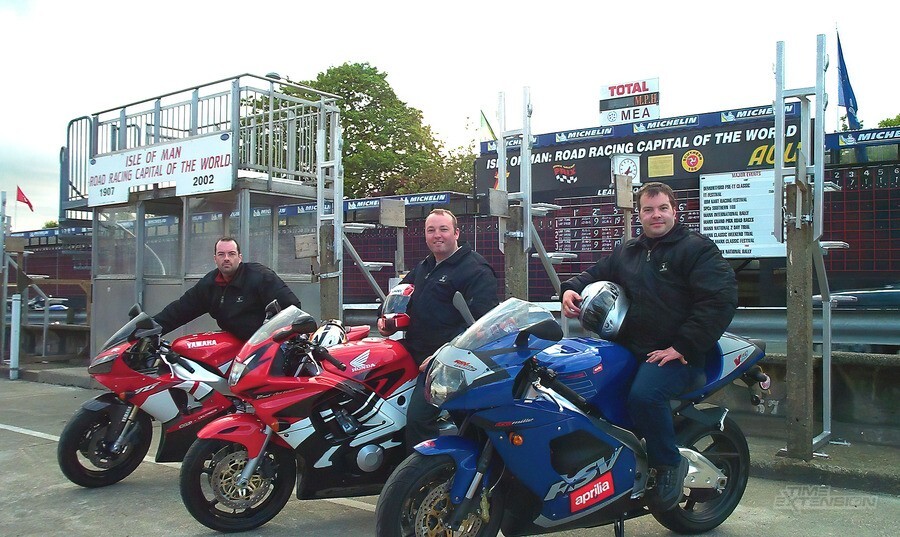
Sadly, for fans of the superb series, Music 3000 ultimately proved to be the last game created by the team at Jester Interactive. Codemasters released the Mix Max-developed MTV Music Generator 3 in 2004 for both PS2 and Xbox, but though reasonably well received, it was a much simpler tool than what Jester had provided, and the series died there.
Though there was a buzz to see what the series would be like on the upcoming HD PlayStation 3, it was not to be, as the writing was on the wall at Jester. A mix of internal politics, bad luck and mismanagement – coupled with the owner going off to do his own thing – Wright and his brothers left Jester to form Checkmate Solutions. "From this new company, we would assist Empire Interactive in developing a new range of eJay music composition software on PC," he says. "This we did for a number of years before all going our own separate ways."
Despite somewhat limping out with Music 3000, it’s impossible to deny that Jester’s music products were awe-inspiring and certainly deserved another title on PS3 and Xbox 360. With increased RAM and storage space, these could have been truly special, and we are now sadly left to imagine what a new Music game could have brought to the table in the HD era. Whilst music software is easier to access than ever on computers, few apps and programs have the outright user-friendliness, depth and appeal of the Music series. There is no doubt that Jester has left a legacy every bit as awesome as any 'true' console game.

